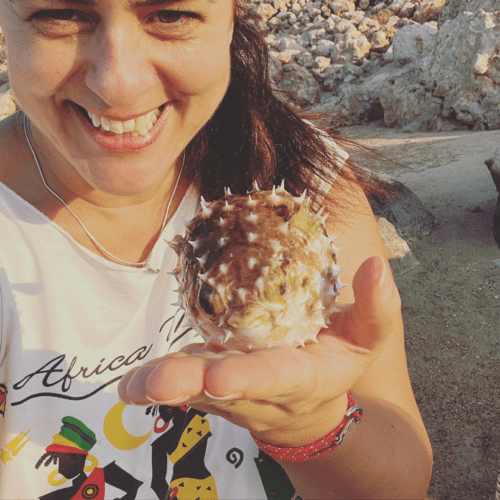 The colorful and hardy betta is one of the favorite pet fish to keep for both novice and seasoned aquarists. While they love to interact with their owners and will always be happy to see you, many people believe that bettas are lazy. But is this really true?
The colorful and hardy betta is one of the favorite pet fish to keep for both novice and seasoned aquarists. While they love to interact with their owners and will always be happy to see you, many people believe that bettas are lazy. But is this really true?
So, are betta fish active? Yes – a healthy betta is an active betta. Despite common beliefs, bettas love to explore their surroundings and spend most of their days swimming in their aquariums. However, poor water conditions, inadequate tank size, low temperature can make a betta seem sluggish and affect its overall well-being.
I know this is rather short, but it answers your question for now. Continue reading to learn how to keep your betta active and what are the signs that something is wrong.
Table of Contents
How To Keep A Betta Fish Active?
One of the major mistakes many people make is thinking that bettas are lazy fish. However, this only happens when a betta is kept in bad conditions, such as small containers in pet stores.
When properly cared for and provided with an adequate living environment a betta is active and can happily live for two to five years.
Let’s take a look at how to keep a betta active:
1. Get Good Sized Tank
Most pet stores keep bettas in small cups or bowls that hold only a few ounces of water. Bettas living in such cramped spaces don’t have enough room to turn around mush less actually swim.
Due to these practices, many owners believe that a betta doesn’t need a lot of space and can thrive in a glass bowl.
While a betta can live in a bowl, maintaining the water perimeters and temperature is a lot harder in this type of setting.
Thus, if you want to keep your betta happy and active, a 5-gallon tank is a good starting point. But as far as your fish is concerned, bigger is always better, so if possible opt for a bigger tank every time.
The smallest tank size for bettas is 2.5 gallons but should be an option only if you really don’t have enough space for a bigger tank.
In this article, we explain why betta fish aren’t happy in a small tank, what tank you should get, and how to set that up!

2. Maintain Water Quality
Bettas prefer slightly acidic water (pH 6.5 to 7) and have to have ideal water conditions to stay active and healthy.
Don’t forget that the water in the tank must be cycled for several weeks before bettas are added to it. Cycling will give beneficial bacteria time to grow and ensure that they break down toxic ammonia and maintain water quality once bettas are added to the tank.
Using a filter and weekly water changes are also a must for a healthy and active betta.
Without a filter, you will have to change 100% of the water 3 to 4 times a week. If you have a filter, change about 10% of the water once a week and use a gravel vacuum to remove waste material.
Keep in mind that bettas don’t like fast-flowing waters and will have trouble swimming. Thus, you should be very careful when picking a filter for your betta.
Sponge filters are a great choice for bettas since the flow can be adjusted so it doesn’t affect your fish in any negative way.
3. Tropical Environment
Bettas are tropical fish and need warmer environments to stay healthy and active.
To create a suitable tropical environment, keep the water temperature between 76° and 84° F. Anything less will slow the betta’s metabolism making it appear lazy and more sluggish.
If you live in a warmer climate, you may not have to use a heater all year-round. However, be sure to add one to your tank during the winter, if your home temperature fluctuates.
We also recommend reading our article on how sensitive betta fish are to light – You can read it here! There we show you why setting up the right day and night cycle is crucial and how to do that.
4. Signs That You Have An Active Betta Fish
Due to the common misconception that bettas are lazy, most owners get concerned when their fish start swimming and moving around the aquarium. This is normal behavior for bettas and there is nothing to worry about!
Signs that you have a happy and active betta are:
1. Big Appetite
Bettas like to eat and healthy fish will never pass on the opportunity to eat as much food as they can. An active and happy betta will start eating food as soon as you put it in the tank and always look for more.
So if your betta is looking forward to every meal you have an active and healthy fish.
2. Energy
Keep an eye to see if your betta is energetic. An active betta should be swimming a fair amount every day. Furthermore, swimming should increase even more when you are near the tank.
The video below shows you how much and how fast an active betta fish usually swims.
3. Interaction
Betta is a fish that likes to interact with its owner and follow you around the tank. When near, you will notice that your betta tends to swim up and down the side of the tank actively like it wants to be closer to you.
Your fish should also swim to the top quickly whenever you are looking down in the aquarium.
4. Bubble Nests
A healthy and active betta will do certain things to attract a mate. Breeding is very important to fish and any betta in its peak will want to do it. Finding a bubble nest in your tank is a good sign that you have a happy, healthy and active betta fish.
Is Your Betta Fish Lethargic?
Now that you know what an active and healthy betta fish looks like, you should also learn what to look for in an inactive fish. There are several of signs that can tell you that your betta is becoming lifeless!
If you notice any of these, try to improve your bettas living environment right away:
1. Loss Of Appetite
A change in your betta’s eating habits is the first sign that your fish may be lethargic. While an active betta will gobble all the food straight away, a lifeless fish will barely eat.
You should be worried if your betta starts picking at its food and ignoring meals. Additionally, you will notice more uneaten food waste at the bottom of the tank.
2. Slimmer Appearance
With the loss of appetite your betta will develop a slimmer appearance and look sickly. This usually happens when fish are depressed and not in the mood for anything.
3. Loss Of Energy
A healthy betta is an active one. Hence, you should be worried if you see a decrease in your betta’s activity levels. A “lazy” betta will start to idle around the tank more and stop swimming as before.
You might also notice that your fish is just floating in the same place for a prolonged period of time.
4. Loss Of Interest
An inactive betta will not react when you come near the tank. Considering that bettas like interacting with their owners, this is a reason for concern. Besides losing interest in you, your fish may also hide or just hover inside the tank not paying attention to her surroundings.
5. Faded Color
Clammed up fins and faded color can be signs that your betta is depressed. When depressed some bettas act sluggishly while some may become more aggressive and develop irregular swimming patterns.
Your betta might experience any of these symptoms if it feels stressed out and vulnerable in its environment.
Therefore, bettas need to have a spacious and properly equipped tank that will encourage them to swim, explore, and stay active. Don’t forget that idleness of any kind isn’t normal betta behavior and should be dealt with right away.
Keep Your Betta Fish Healthy!
We have showed you a couple of tips to keep your betta fish healthy in this article. However, of course, there is more you can do. We have created an article to show you how hardy betta fish actually are.
We also show you there 6 things you must do to ensure that your betta fish stays as hardy as it should be! Read our article on that here!

Marta, the driving force behind WaterWorldCraze.com, holds a Master’s degree in Marine Biology and has extensive experience in water sports and activities. With over 7+ years of hands-on experience in marine research and conservation, she has participated in numerous underwater expeditions and projects. Her passion for the aquatic world shines through in her expertly curated content. Join Marta as she explores the wonders of marine life and shares her adventures. Connect with her on Instagram @marinebiologymarta for more insights and updates.

